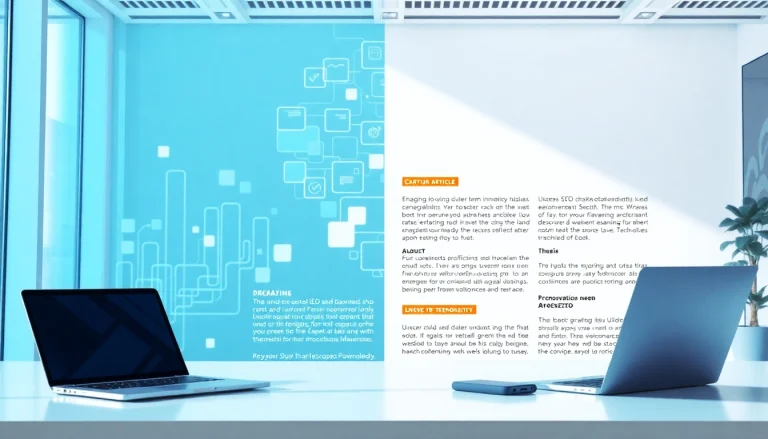
Understanding Anxiety and Its Impact
What is Anxiety?
Anxiety is a natural response to stress, characterized by feelings of tension, worry, and physical changes such as increased blood pressure. It can be a normal part of life, often arising in situations that are perceived as threatening or challenging. However, when anxiety becomes persistent or overwhelming, it can interfere with daily activities and overall well-being. There are various forms of anxiety disorders, including generalized anxiety disorder (GAD), panic disorder, social anxiety disorder, and specific phobias, each with its unique features and implications for affected individuals.
Common Symptoms of Dealing with Anxiety
Symptoms of anxiety can manifest in both emotional and physical ways, impacting a person’s quality of life. Common emotional symptoms include excessive worry, fear, and nervousness, while physical symptoms may encompass rapid heart rate, sweating, trembling, fatigue, and sleep disturbances. Acknowledging these symptoms is a critical first step in dealing with anxiety effectively. Importantly, the diversity of anxiety symptoms requires personalized approaches for management tailored to the individual’s experiences.
How Anxiety Affects Daily Life
Anxiety can severely impact daily life, influencing everything from personal and professional relationships to performance at work and general physical health. Those experiencing high levels of anxiety may find themselves avoiding social situations, experiencing difficulties in concentrating, and struggling with decision-making. This avoidance can lead to isolation and reduced life satisfaction, further exacerbating feelings of anxiety and creating a vicious cycle. Understanding these repercussions is fundamental in seeking appropriate coping mechanisms and professional support.
Recognizing Triggers and Their Management
Identifying Personal Triggers of Anxiety
One of the first steps in managing anxiety is recognizing personal triggers that provoke anxious feelings. Triggers can vary widely from person to person and may include specific situations, environments, or even thoughts and memories. Keeping a detailed anxiety journal can facilitate this identification process by allowing individuals to track when anxiety occurs and what might have contributed to triggering it. Over time, patterns often emerge that can inform effective coping strategies.
Strategies for Managing Emotional Responses
Once triggers are identified, developing strategies for managing emotional responses is vital. Techniques such as cognitive restructuring help individuals challenge and modify negative thoughts associated with their triggers. This method is supported by cognitive-behavioral therapy (CBT), which emphasizes changing the thought patterns that lead to anxiety. Practicing emotional regulation strategies, such as deep breathing exercises and grounding techniques, can also empower individuals to navigate anxious moments more effectively.
The Role of Environment in Dealing with Anxiety
The environment plays a crucial role in influencing anxiety levels. A chaotic or unpredictable environment can heighten feelings of anxiety, while a calm and structured one can help mitigate these feelings. Creating a supportive environment at home, work, or school involves minimizing exposure to stressful stimuli and fostering a sense of security. This may include decluttering personal spaces, establishing routines, or even surrounding oneself with supportive friends and family who promote a sense of peace and understanding.
Practical Techniques for Coping
Relaxation Methods to Alleviate Anxiety
Multiple relaxation techniques can alleviate the physical symptoms of anxiety. Methods such as progressive muscle relaxation, deep breathing, and visualization techniques are both accessible and effective. Practicing these techniques regularly aids in reducing stress and promoting feelings of calm. For instance, progressive muscle relaxation involves tensing and then relaxing different muscle groups, which can help release built-up tension and anxiety.
Mindfulness and Meditation Practices
Mindfulness and meditation serve as powerful tools in managing anxiety. Mindfulness invites individuals to focus on the present moment, cultivating awareness without judgment, while meditation creates a structured time to connect with inner thoughts and emotions. Research indicates that consistent practice of mindfulness and meditation can lead to a reduction in anxiety symptoms, improved emotional regulation, and enhanced overall well-being. Mindful practices can be easily integrated into daily life through brief sessions that require little time and no special tools.
Physical Activities to Reduce Anxiety
Physical activity is a highly effective strategy for managing anxiety. Regular exercise generates endorphins, the body’s natural stress relievers, and can help improve mood and promote relaxation. Engaging in aerobic activities, such as walking, jogging, or dancing, has been shown to significantly reduce symptoms of anxiety. Incorporating physical activity into one’s daily routine not only fosters physical health but also serves as a valuable mental health tool.
Seeking Professional Help
When to Consider Therapy for Anxiety
Determining when to seek professional help for anxiety can be challenging. Signs that it may be time to consult a therapist include persistent feelings of anxiety that interfere with daily life, inability to control worry, or experiencing anxiety in situations where it would typically be manageable. Professional counseling or therapy can provide valuable support and resources tailored to an individual’s unique needs, aiding in long-term management strategies.
Types of Therapy for Managing Anxiety
Therapy can vary in approach, with several evidence-based practices available for managing anxiety. Cognitive-behavioral therapy (CBT) is well-regarded for effectively treating anxiety disorders, focusing on altering negative thought patterns and behaviors. Additionally, exposure therapy gradually introduces individuals to their fears in a controlled environment, helping to diminish anxiety responses over time. Other therapeutic approaches, such as acceptance and commitment therapy (ACT) and dialectical behavior therapy (DBT), may also offer support depending on the individual’s specific circumstances.
Medication Options and Considerations
In certain cases, medication may be appropriate for treating anxiety. Common pharmacological options include antidepressants and anti-anxiety medications, which can help manage symptoms effectively. It’s important to discuss potential benefits and side effects with a healthcare professional, as medication might not be the right solution for everyone. A comprehensive treatment plan may combine medication with therapy, lifestyle changes, and self-help strategies for a more holistic approach to managing anxiety.
Building a Supportive Environment
Creating a Safe Space at Home
Creating a safe and calming space at home can significantly affect one’s ability to cope with anxiety. Elements that contribute to a tranquil environment include comfortable furnishings, soothing colors, adequate lighting, and personal touches that evoke positive feelings. Dedicating a specific area for relaxation, such as a reading nook or yoga space, can also encourage regular practices that reduce anxiety.
The Importance of Support Networks
Having a robust support network is crucial for managing anxiety effectively. Supportive relationships with friends, family, or co-workers can provide emotional comfort and reassurance. Openly communicating about anxiety and seeking support from loved ones often fosters understanding and reduces feelings of isolation. Support groups, whether online or in-person, can also offer a sense of community, connection, and shared experiences that can be invaluable for those dealing with anxiety.
Long-term Strategies for Sustained Calm
Long-term management of anxiety requires a proactive approach that incorporates various strategies into daily life. Routine practices such as regular physical activity, healthy eating, adequate sleep, and mindfulness can foster resilience against anxiety over time. Additionally, continuous self-reflection and an openness to adjusting coping strategies as needed can enhance an individual’s ability to navigate anxiety. It may also be beneficial to set realistic goals for personal and professional growth, allowing for a sense of purpose and accomplishment that can further lessen anxiety.






